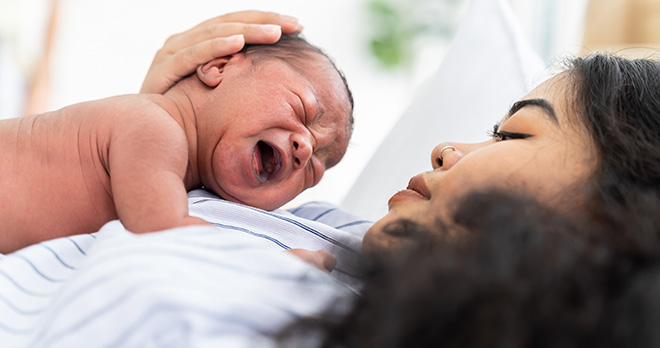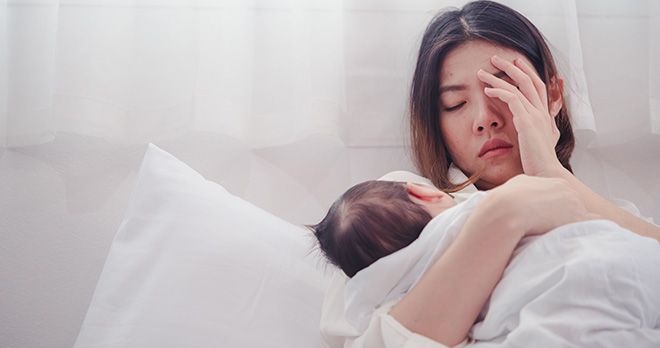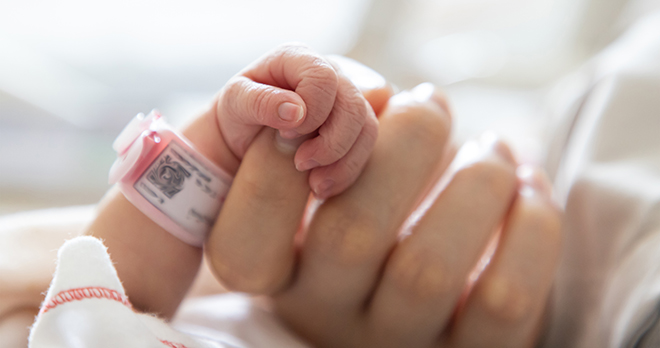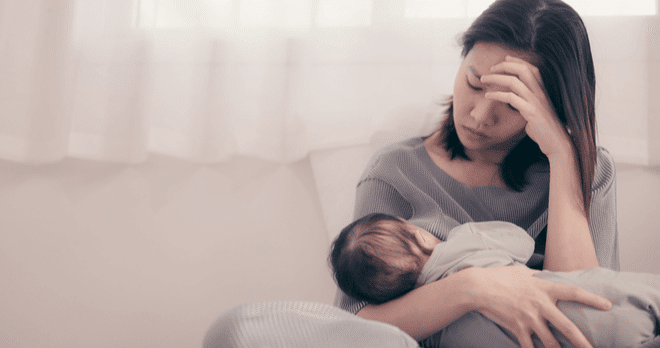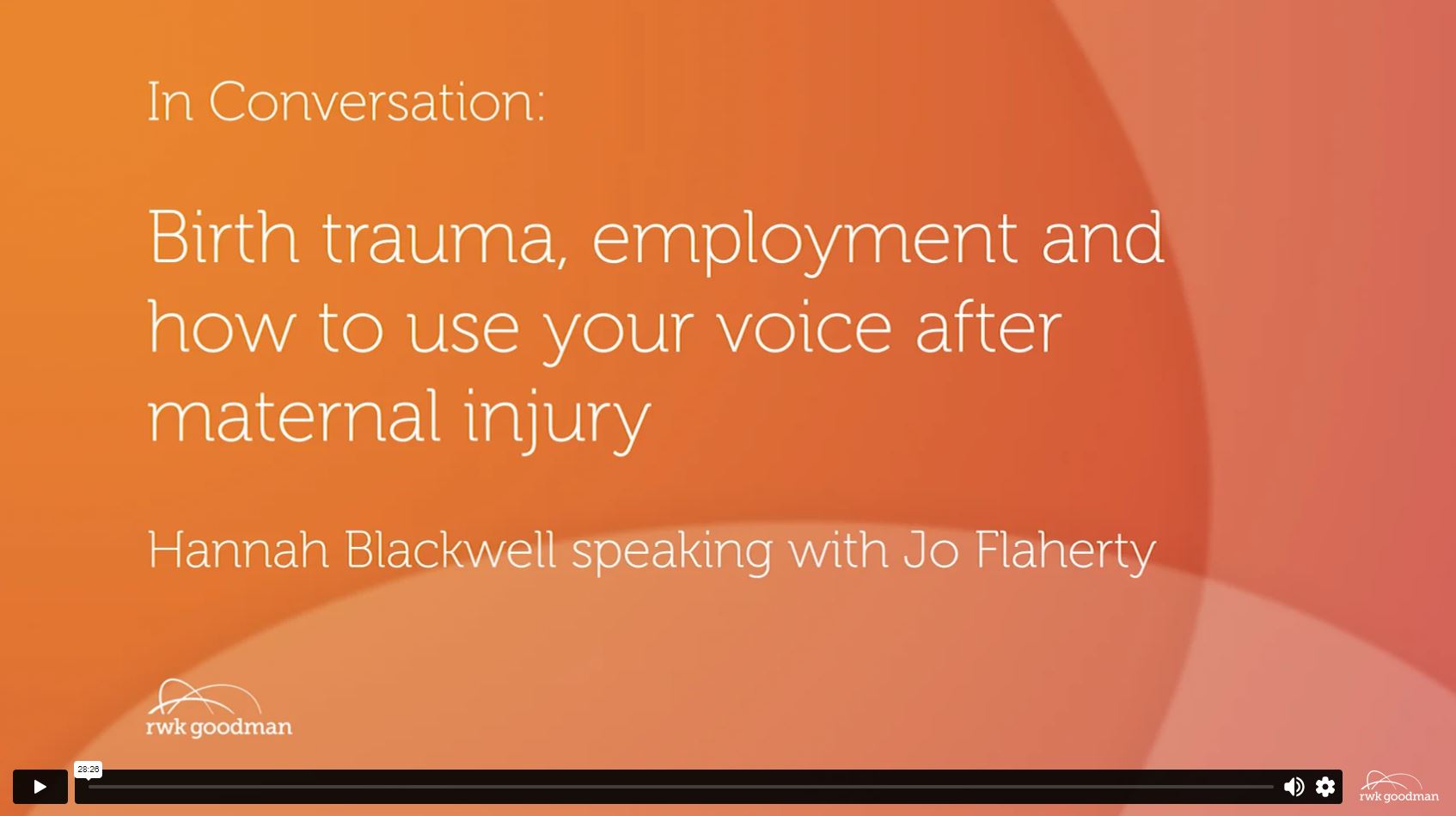What are the symptoms of sepsis after giving birth?
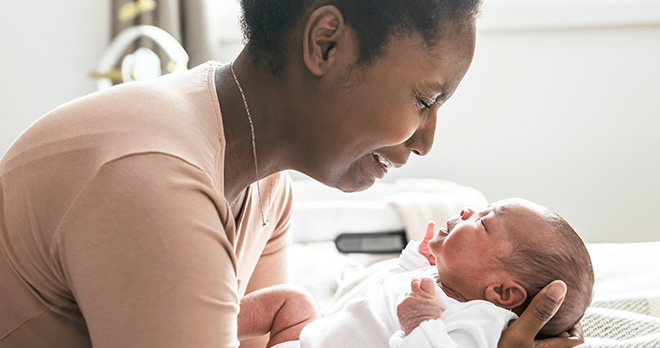
Sepsis is the body’s over-response to an infection by over-fighting the infection and attacking the body’s organs and tissues. It can lead to multiple organ failure if not treated quickly.
When a mother gives birth, her body goes though many changes and sometimes infections can get into the body whilst it is recovering from labour and/or pregnancy. This can lead to maternal sepsis.
What postpartum symptoms should not be ignored?
There can be many symptoms caused by maternal sepsis, and not everyone who is diagnosed with sepsis will experience all of them.
Some symptoms which should not be ignored and for which urgent help and treatment should be sought, include, but are not limited to:
- fever;
- chills/shivering;
- unpleasant smelling, or change in colour of, vaginal discharge;
- a sudden increase in vaginal bleeding;
- lower abdominal pain;
- diarrhoea, nausea and/or vomiting;
- confusion;
- rapid heartbeat;
- breathlessness;
- mottled or discoloured skin (skin rash).
How should maternal sepsis be treated?
Maternal sepsis can occur at any time during pregnancy or, usually, within the first six weeks of delivering a baby.
Sepsis can be difficult to diagnose, but when it is, effective and quick treatment is needed to avoid severe complications.
Treatment will usually include broad spectrum antibiotics given intravenously in hospital to fight the infection.
Antibiotics can also be given to the baby after they are born as a precaution, to prevent them from getting the infection, if there is a concern that the sepsis may have passed from mother to baby.
If treatment is not given quickly, then further complications can develop.
Is sepsis a cause of maternal death?
Sadly, the Sepsis Trust reports that maternal sepsis is a significant cause of maternal-related deaths worldwide, with a 10% mortality rate in the UK.
The National Childbirth Trust reports that maternal sepsis is the third most common cause of maternal death in the first six weeks after birth, in the UK and Ireland. It is imperative that early diagnosis and treatment of sepsis occurs to prevent deaths in new mothers.
How common is sepsis after c-section?
Sepsis can occur as a result of a number of factors, but there are additional factors which will put a mother at risk of suffering with sepsis during or after birth. Undergoing surgery, such as a caesarean section, can increase the likelihood of infection and sepsis developing. This is because the body is open to the introduction of bacteria into otherwise sterile environments, and a c-section is major abdominal surgery.
To help prevent an infection which could lead to sepsis following a c-section, the wound/scar area should be kept as clean and dry as possible.
Other risk factors for developing infection and sepsis during or following childbirth include, but are not limited to:
- the premature rupture of membranes (early breaking of waters);
- a prolonged period of time between the rupture of membranes and delivery (more than 24 hours);
- gestational diabetes;
- induction of labour;
- a history of Group B Streptococcal infection;
- any medical condition that weakens the immune system.
Case Example
If you have experienced maternal sepsis, as birth injury solicitors we may be able to help. The case below highlights what happened to one of our clients:
Our client was diagnosed with gestational diabetes and, shortly prior to the birth of her baby, developed a thick, yellow, foul-smelling discharge. A high vaginal swab was taken but the results were never reviewed. The results were that of Group B Streptococcal infection, for which our client did not receive any treatment. She was admitted to hospital 24 hours after her waters broke at home but her labour was not progressed adequately by the hospital. Our client began suffering with a high temperature, vomiting and feeling very cold and shivery. Her lips and hands turned blue and she began to feel very confused and was unsure of what was going on around her.
Eventually she was diagnosed with sepsis and was given broad spectrum antibiotics to treat the infection. She underwent an emergency c-section to deliver her baby, 41 hours after her waters had broken. Our client, and her baby, required a prolonged course of antibiotics and stay in hospital, and she now suffers psychologically from the trauma she experienced during the birth of her baby girl.
Our maternal injury solicitors are here to help when you’ve experienced negligent treatment of maternal sepsis.
Call now
